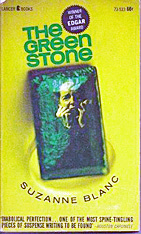Fri 24 Feb 2017
A 1001 Midnights Review: LAWRENCE BLOCK – Eight Million Ways to Die.
Posted by Steve under 1001 Midnights , Reviews[7] Comments
by Marcia Muller
LAWRENCE BLOCK – Eight Million Ways to Die. Arbor House, hardcover, 1982. Paperback reprints include: Jove, 1983; Avon, 1991. Film:, 1985, with Jeff Bridges as Matt Scudder (also partly based on A Stab in the Dark).
Ex-New York policeman Matthew Scudder is not a formally licensed private investigator; he says you could call what he does “hustling for a buck…. I do favors for friends.” As this novel opens, he is about to take on a favor for a friend of a friend, Kim Dakkinen, a call girl who wants to get out of the business. Kim is afraid to tell her pimp she is leaving, and Scudder’s job is to act as go-between.
The job goes altogether too easily. The pimp is an unusual man named Chance, with a secret hideaway in Brooklyn (to which he has admitted no one, although he later takes Scudder there) and an easygoing manner that convinces Scudder he will let Kim go. When she is brutally murdered, Scudder, an alcoholic who has been attending AA for less than two weeks, begins to drink, suffers a blackout, and wakes up in the hospital.
After his release, he is contacted by Chance, who insists he did not kill Kim — or have her killed — and asks that Scudder find out who did. Scudder’s quest takes him into the apartments of call girls and through the bars of Manhattan and Harlem. He periodically stops in at AA meetings- just listening, refusing to speak when his turn comes.
Teetering on the edge of drunkenness, he crosses and recrosses the city in which there are 8 million ways to die — many of them cataloged from Scudder’s obsessive reading of the newspapers — in search of a killer with a motive that is almost impossible to discern.
This novel was nominated for a Mystery Writers of America Edgar and won the Private Eye Writer sof America Shamus Award for Best Hardcover Private Eye Novel of 1982. It is grim and powerful and, along with the other Scudder novels — In the Midst of Death (1976), Sins of the Fathers (1977), Time to Murder and Create (1977), and A Stab in the Dark (1981) — contains some of Block’s finest writing to date.
———
Reprinted with permission from 1001 Midnights, edited by Bill Pronzini & Marcia Muller and published by The Battered Silicon Dispatch Box, 2007. Copyright © 1986, 2007 by the Pronzini-Muller Family Trust.

